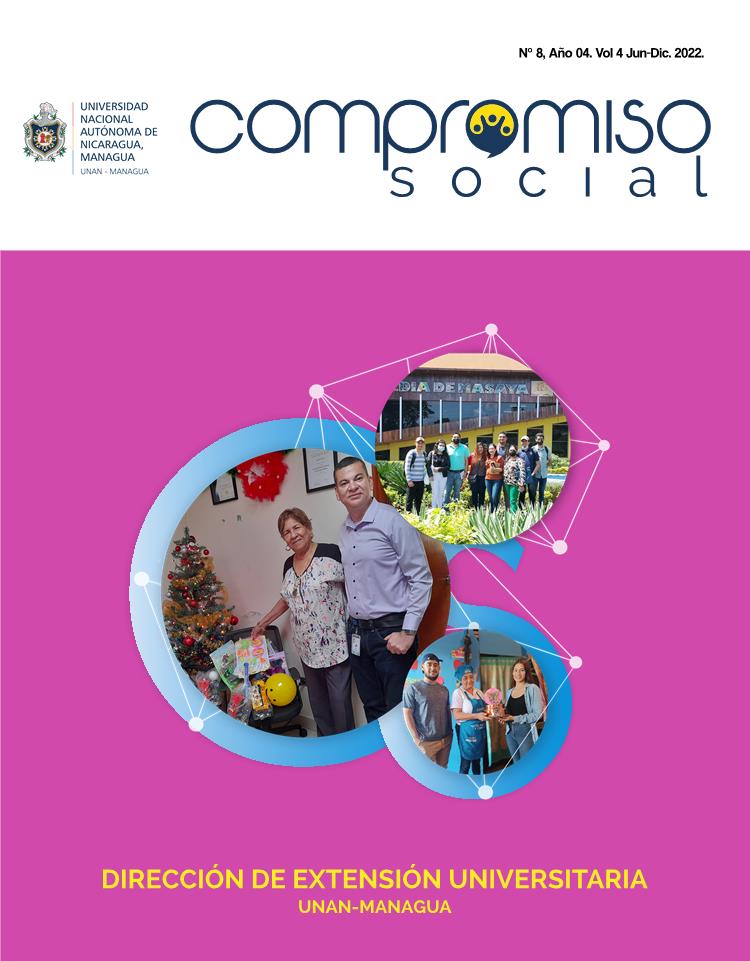Of knowledge and flavors: a historical look at the gastronomy of creative cities
DOI:
https://doi.org/10.5377/recoso.v4i8.18633Keywords:
Ancestral knowledge, ethnobotany, man-nature relationship, medicinal and gastronomic plants, traditional useAbstract
Within our social organization, human beings and nature have developed a unique relationship, so important is that the first forms of systematic use of plants are recognized, from the decoding of the clay tablets of the Sumerian people. Located in the southern zone of the Pacific Region of Nicaragua, are the municipalities of Masaya and San Juan de Oriente, which are currently part of the National Network of Creative Cities, from where it is about promoting the innovative talent of the protagonists, their creative capacities are strengthened through art, design, crafts, music, fashion, literature, and gastronomy. Of knowledge and flavors, it is a historical approximation to the state of the gastronomic flavors of the Creative Cities of San Juan de Oriente and Masaya, who due to their particular history preserve within their popular ideology traits of customs as in the past. Therefore, this article aims to present a general outline of the state of ancestral knowledge, focusing especially on the gastronomy that still survives in the municipalities of Masaya and San Juan de Oriente, which due to their particular history make up an invaluable element of their history ancestral heritage.
Downloads
References
Aparicio Mena, A.J. (2005). Las plantas en la cultura tradicional de salud mesoamericana. Revista de Antropología Experimental.
Argueta, V.A., Cano-Asseleih, L.M. y Rodarte, M.E.1994). Atlas de las Plantas de la Medicina Tradicional Mexicana. Instituto Nacional Indigenista, México D.F.
Arias, E. (1977). Plantas medicinales. Ed. Gráficas, Medellín. Balick, M.J. y Cox, P.A. (1996). Plants, people and culture: the science of ethnobotany. The New York. Botanical Garden, Nueva York.
Bermejo, J.E. (1996). Registro de datos: preparación y estrategia del trabajo de campo. Monografías del Jardín Botánico de Córdoba.
Bermúdez, A., Oliveira-Miranda, M.A. y Velázquez, D. (2005). La investigación etnobotánica sobre plantas medicinales: una revisión de sus objetivos y enfoques actuales. Interciencia.
Bermúdez, A. y Velázquez, D. (2002). Etnobotánica médica de una comunidad campesina del estado Trujillo, Venezuela: un estudio preliminar usando técnicas cuantitativas.
Beyra, A., León, M.C., Iglesias, E., Ferrándiz, D., Herrera, R. y Volpato, G. (2004). Estudios etnobotánicos sobre plantas medicinales en la provincia de Camagüey (Cuba). Anales del Jardín Botánico de Madrid.
Blanché, C., Bonet, M.A., Muntané, J. y Vallès, J. (1996). Bases de datos en etnobotánica: elaboración de los resultados. Monografías del Jardín Botánico de Córdoba.
Carmack, R.M. (1993). Introducción: Centroamérica aborigen en su contexto histórico geográfico. En: Carmack, R.M. (Ed.), Historia General de Centroamérica.
Downloads
Published
Issue
Section
License
Copyright (c) 2022 Universidad Nacional Autónoma de Nicaragua, Managua(UNAN-Managua)

This work is licensed under a Creative Commons Attribution-NonCommercial-ShareAlike 4.0 International License.




